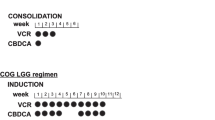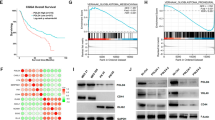Abstract
The most common primary brain malignancy, glioblastoma multiforme, is tremendously resistant to conventional treatments due to its potency for metastasis to surrounding brain tissue. Temozolomide is a chemotherapeutic agent that currently is administrated during the treatment procedure. Studies have attempted to investigate new agents with higher effectiveness and fewer side effects. Combretastatin A-4 (CA-4), a natural compound derived from Combretum caffrum, has been recently considered for its potent antitumor activities in a wide variety of preclinical solid tumor models. Our findings have shown that CA-4 exerts potent anti-proliferative and apoptotic effects on glioma cells, and ROS generation may be involved in these cellular events. CA-4 has imposed G2 arrest in U-87 cells. We also observed that CA-4 significantly reduced the migration and invasion capability of U-87 cells. Furthermore, the gene expression and enzyme activity of MMP-2 and MMP-9 were significantly inhibited in the presence of CA-4. We also observed a considerable decrease in PI3K and Akt protein expression following treatment with CA-4. In conclusion, our findings showed significant apoptogenic and anti-metastatic effects of CA-4 on glioma cells and also suggested that the PI3K/Akt/MMP-2/-9 and also ROS pathway might play roles in these cellular events.








Similar content being viewed by others
Data Availability
All data generated or analyzed during this study are included in this published article. More details and raw data will be available upon request.
References
Dimov I, et al. Glioblastoma multiforme stem cells. ScientificWorldJournal. 2011;11:930–58.
Maghrouni A, et al. Targeting the PD-1/PD-L1 pathway in glioblastoma multiforme: Preclinical evidence and clinical interventions. Int Immunopharmacol. 2021;93: 107403.
Afshari AR, et al. Auraptene-induced cytotoxicity mechanisms in human malignant glioblastoma (U87) cells: role of reactive oxygen species (ROS). EXCLI J. 2019;18:576–90.
Afshari AR, et al. Effects of statins on brain tumors: a review. Semin Cancer Biol. 2020;73:116.
Afshari AR, Mollazadeh H, Sahebkar A. Minocycline in treating glioblastoma multiforme: far beyond a conventional antibiotic. J Oncol. 2020;2020:8659802.
Soukhtanloo M, et al. Natural products as promising targets in glioblastoma multiforme: a focus on NF-κB signaling pathway. Pharmacol Rep. 2020;72(2):285–95.
Afshari AR, et al. Protective role of natural products in glioblastoma multiforme: a focus on nitric oxide pathway. Curr Med Chem. 2021;28(2):377–400.
Ng QS, et al. Tumor antivascular effects of radiotherapy combined with combretastatin a4 phosphate in human non-small-cell lung cancer. Int J Radiat Oncol Biol Phys. 2007;67(5):1375–80.
Pettit GR, et al. Antineoplastic agents 322. synthesis of combretastatin A-4 prodrugs. Anticancer Drug Des. 1995;10(4):299–309.
Zhao D, et al. Antivascular effects of combretastatin A4 phosphate in breast cancer xenograft assessed using dynamic bioluminescence imaging and confirmed by MRI. Faseb j. 2008;22(7):2445–51.
Nik ME, et al. Targeted-nanoliposomal combretastatin A4 (CA-4) as an efficient antivascular candidate in the metastatic cancer treatment. J Cell Physiol. 2019;234:14721.
Qin H, et al. PI3Kgamma inhibitor attenuates immunosuppressive effect of Poly(l-Glutamic Acid)-combretastatin A4 conjugate in metastatic breast cancer. Adv Sci (Weinh). 2019;6(12):1900327.
Zhang C, et al. Anti-cancer effect of metabotropic glutamate receptor 1 inhibition in human glioma U87 cells: involvement of PI3K/Akt/mTOR pathway. Cell Physiol Biochem. 2015;35(2):419–32.
Kleiner DE, Stetler-Stevenson WG. Matrix metalloproteinases and metastasis. Cancer Chemother Pharmacol. 1999;43(Suppl):S42-51.
Zhang S, et al. Autophagy- and MMP-2/9-mediated reduction and redistribution of ZO-1 contribute to hyperglycemia-increased blood-brain barrier permeability during early reperfusion in stroke. Neuroscience. 2018;377:126–37.
Liu Y, et al. Fucoxanthin activates apoptosis via inhibition of PI3K/Akt/mTOR pathway and suppresses invasion and migration by restriction of p38-MMP-2/9 pathway in human glioblastoma cells. Neurochem Res. 2016;41(10):2728–51.
Chen G, et al. Plumbagin suppresses the migration and invasion of glioma cells via downregulation of MMP-2/9 expression and inaction of PI3K/Akt signaling pathway in vitro. J Pharmacol Sci. 2017;134(1):59–67.
Rodriguez LG, Wu X, Guan JL. Wound-healing assay. Methods Mol Biol. 2005;294:23–9.
Vandooren J, et al. Zymography methods for visualizing hydrolytic enzymes. Nat Methods. 2013;10(3):211–20.
Livak KJ, Schmittgen TD. Analysis of relative gene expression data using real-time quantitative PCR and the 2(-Delta Delta C(T)) Method. Methods. 2001;25(4):402–8.
Mohtashami E, et al. The current state of potential therapeutic modalities for glioblastoma multiforme: a clinical review. Curr Drug Metab. 2020;21(8):564–78.
Sherbet GV. Combretastatin analogues in cancer biology: A prospective view. J Cell Biochem. 2020;121(3):2127–38.
Nathan P, et al. Phase I trial of combretastatin A4 phosphate (CA4P) in combination with bevacizumab in patients with advanced cancer. Clin Cancer Res. 2012;18(12):3428–39.
Kamal A, et al. Synthesis and biological evaluation of arylcinnamide linked combretastatin-A4 hybrids as tubulin polymerization inhibitors and apoptosis inducing agents. Bioorg Med Chem Lett. 2016;26(12):2957–64.
Yan J, et al. A novel synthetic compound exerts effective anti-tumour activity in vivo via the inhibition of tubulin polymerisation in A549 cells. Biochem Pharmacol. 2015;97(1):51–61.
Tian J, et al. Scoulerine promotes cell viability reduction and apoptosis by activating ROS-dependent endoplasmic reticulum stress in colorectal cancer cells. Chem Biol Interact. 2020;327: 109184.
Kanthou C, et al. The tubulin-binding agent combretastatin A-4-phosphate arrests endothelial cells in mitosis and induces mitotic cell death. Am J Pathol. 2004;165(4):1401–11.
Patterson JC, et al. ROS and oxidative stress are elevated in mitosis during asynchronous cell cycle progression and are exacerbated by mitotic arrest. Cell Syst. 2019;8(2):163-167.e2.
Karimi Roshan M, et al. Role of AKT and mTOR signaling pathways in the induction of epithelial-mesenchymal transition (EMT) process. Biochimie. 2019;165:229–34.
Jalili-Nik M, et al. Cytotoxic effects of ferula latisecta on human glioma U87 cells. Drug Res (Stuttg). 2019;69(12):665–70.
Choe G, et al. Active matrix metalloproteinase 9 expression is associated with primary glioblastoma subtype. Clin Cancer Res. 2002;8(9):2894–901.
Wang C, et al. Effect of matrix metalloproteinase-mediated matrix degradation on glioblastoma cell behavior in 3D PEG-based hydrogels. J Biomed Mater Res A. 2017;105(3):770–8.
Sun LC, et al. A conjugate of camptothecin and a somatostatin analog against prostate cancer cell invasion via a possible signaling pathway involving PI3K/Akt, alphaVbeta3/alphaVbeta5 and MMP-2/-9. Cancer Lett. 2007;246(1–2):157–66.
Mirzavi F, et al. Pegylated liposomal encapsulation improves the antitumor efficacy of combretastatin A4 in murine 4T1 triple-negative breast cancer model. Int J Pharm. 2022;613: 121396.
Gloushankova NA, Rubtsova SN, Zhitnyak IY. Cadherin-mediated cell-cell interactions in normal and cancer cells. Tissue Barriers. 2017;5(3): e1356900.
Lu Y, et al. Monocyte chemotactic protein-1 (MCP-1) acts as a paracrine and autocrine factor for prostate cancer growth and invasion. Prostate. 2006;66(12):1311–8.
Dagouassat M, et al. Monocyte chemoattractant protein-1 (MCP-1)/CCL2 secreted by hepatic myofibroblasts promotes migration and invasion of human hepatoma cells. Int J Cancer. 2010;126(5):1095–108.
Dwyer RM, et al. Monocyte chemotactic protein-1 secreted by primary breast tumors stimulates migration of mesenchymal stem cells. Clin Cancer Res. 2007;13(17):5020–7.
Dwyer J, et al. Glioblastoma cell-secreted interleukin-8 induces brain endothelial cell permeability via CXCR2. PLoS ONE. 2012;7(9): e45562.
Chen JS, et al. Involvement of PI3K/PTEN/AKT/mTOR pathway in invasion and metastasis in hepatocellular carcinoma: Association with MMP-9. Hepatol Res. 2009;39(2):177–86.
Li X, et al. PI3K/Akt/mTOR signaling pathway and targeted therapy for glioblastoma. Oncotarget. 2016;7(22):33440–50.
Wang H, et al. Analysis of the activation status of Akt, NFkappaB, and Stat3 in human diffuse gliomas. Lab Invest. 2004;84(8):941–51.
Sonoda Y, et al. Akt pathway activation converts anaplastic astrocytoma to glioblastoma multiforme in a human astrocyte model of glioma. Cancer Res. 2001;61(18):6674–8.
Kapitonov D, et al. Targeting sphingosine kinase 1 inhibits Akt signaling, induces apoptosis, and suppresses growth of human glioblastoma cells and xenografts. Cancer Res. 2009;69(17):6915–23.
Jo H, Loison F, Luo HR. Microtubule dynamics regulates Akt signaling via dynactin p150. Cell Signal. 2014;26(8):1707–16.
Liang W, et al. Combretastatin A4 regulates proliferation, migration, invasion, and apoptosis of thyroid cancer cells via PI3K/Akt signaling pathway. Med Sci Monit. 2016;22:4911–7.
Barber AG, et al. PI3K/AKT pathway regulates E-cadherin and Desmoglein 2 in aggressive prostate cancer. Cancer Med. 2015;4(8):1258–71.
Funding
Mashhad University of Medical Sciences, Mashhad, Iran. Pharmacological Research Center of Medicinal Plants, Mashhad University of Medical Sciences, Mashhad, Iran. Funding number: 970217.
Author information
Authors and Affiliations
Contributions
MKR, ARA, SHM, MS—Study conception and design. AMR, FM, MKR—Acquisition of data. MKR, SHM—Analysis and interpretation of data. MKR, ARA—Drafting of the manuscript. SHM, MS, ARA—Critical revision.
Corresponding author
Ethics declarations
Conflict of interest
None.
Consent to participate
This was a cell base study, with no human sample included.
Consent for publication
The authors declare there is not any conflict of interest related to the publication of this article.
Additional information
Publisher's Note
Springer Nature remains neutral with regard to jurisdictional claims in published maps and institutional affiliations.
Rights and permissions
Springer Nature or its licensor (e.g. a society or other partner) holds exclusive rights to this article under a publishing agreement with the author(s) or other rightsholder(s); author self-archiving of the accepted manuscript version of this article is solely governed by the terms of such publishing agreement and applicable law.
About this article
Cite this article
Roshan, M.K., Afshari, A.R., Mirzavi, F. et al. Combretastatin A-4 suppresses the invasive and metastatic behavior of glioma cells and induces apoptosis in them: in-vitro study. Med Oncol 40, 331 (2023). https://doi.org/10.1007/s12032-023-02197-1
Received:
Accepted:
Published:
DOI: https://doi.org/10.1007/s12032-023-02197-1




